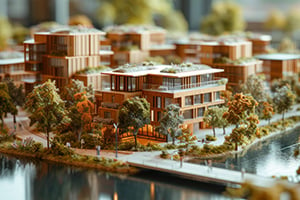By Alyson Laura
Sustainability Maven
LEED AP BD+C, O+M
The city of Aspen announced this week that they are the third American city to be powered by 100% renewable energy. They join Burlington, Vermont and Greensburg, Kansas. Getting beyond coal has high barriers and size does matter. All three cities combined have a population less than 50,000 residents. Find out what other cities are planning to ‘Go 100%’ in this interactive map.

Greensburg, current population 775, was motivated to go green out of necessity. In 2007 a two-mile wide tornado leveled the town and almost half of the residents didn’t return. The town decided to rebuild and rebrand with a masterplan including walkability, greenways, and LEED certified buildings. Small wind turbines and solar panels in the city center only provide 8% of the town’s electricity demand. The rest is covered by a 12.5 megawatt wind farm five miles outside of town. Since 2013, Greenburg has been 100% renewable powered. Read more about Greenburg.
Burlington, current population 42,000, is Vermont’s largest city and has a solid reputation for being green. It’s the home of Ben and Jerry’s ice cream and Bernie Sanders, former mayor and candidate for the 2016 Presidential election. So where does their energy come from?
Burlington’s claims are under scrutiny of the deepest greenies because 35% of their renewable energy is from biomass. Some of the wood is sourced from waste, and some is harvested from Vermont’s forests. Biomass is still a combustion-based process which turns turbines with steam and creates some air pollution. 20% is from wind, and the remainder is from hydroelectric dams in Maine and Vermont. Learn more, here.

Aspen has long been pursuing renewable energy by supporting hydroelectric projects within the state. In addition, it received wind energy from farms in Nebraska and South Dakota. This year’s new purchase of wholesale wind power closed the gap on the previous 20% coal-powered demand.
Every commercial LEED project is eligible for five points by providing green power to their building from on- and off-site. Beyond boosting your certification level, renewable energy is always a safe investment in resiliency and the health of future generations.
© 2015 Sustainable Investment Group (SIG). All Rights Reserved.



